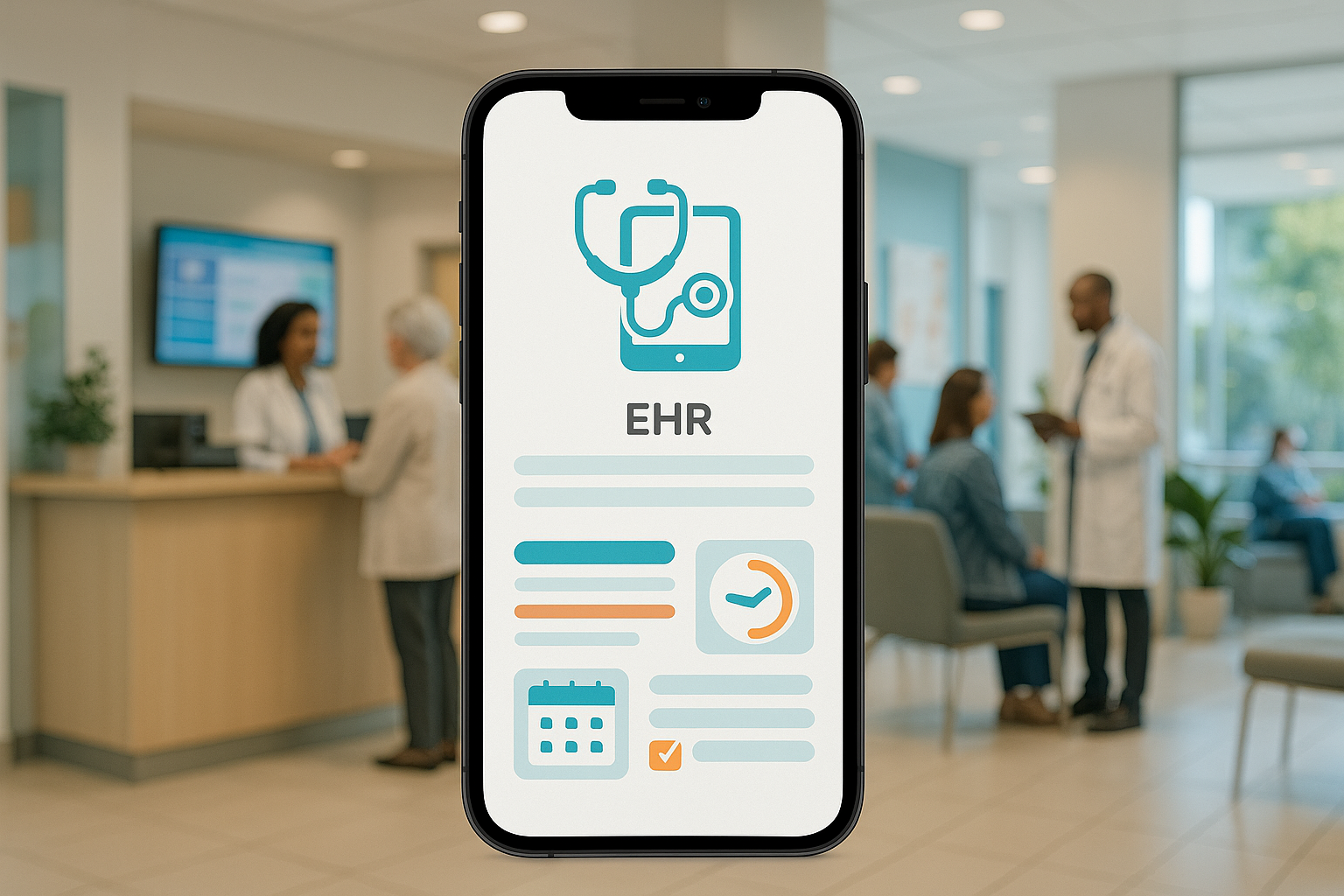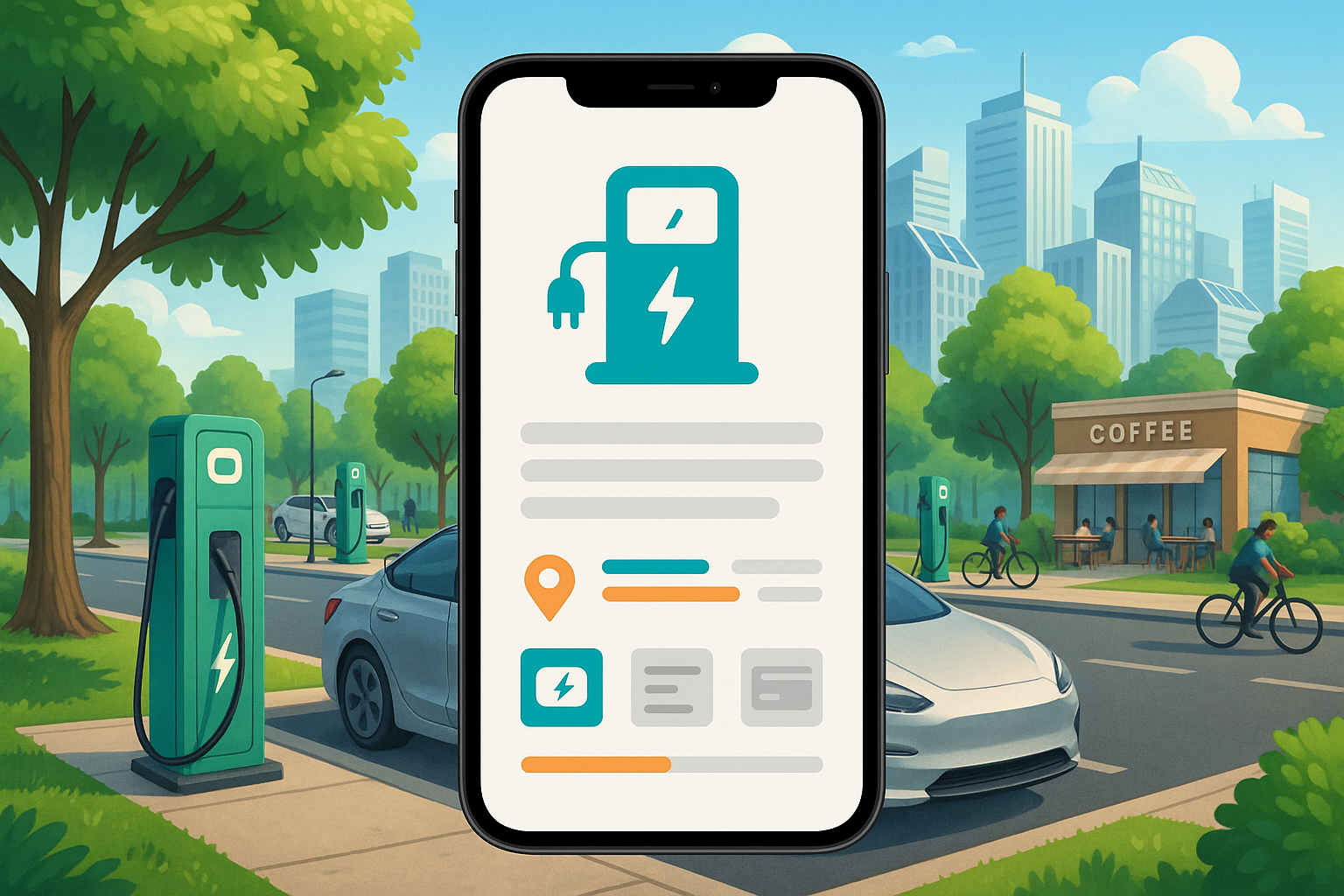Introduction
The digital transformation of healthcare has made Electronic Health Record (EHR) systems an indispensable tool for modern medical practices. These systems promise to streamline workflows, improve patient care, and provide invaluable data insights. However, the path to developing a custom EHR application is notoriously difficult. It’s a journey filled with regulatory minefields, steep technical hurdles, and significant financial investment. Attempting to build such a sophisticated system in-house can quickly overwhelm even the most capable teams, leading to budget overruns, compliance failures, and a product that falls short of user needs.
This article serves as a comprehensive guide to EHR app development. We will explore what an EHR application is, dissect the formidable challenges of building one from scratch, and categorize the different types of EHR systems available today. Furthermore, we will provide a realistic cost estimate for custom development and introduce you to the leading companies in this specialized field.
As a top US AI-powered app development firm with over two decades of experience, we at MetaCTO have guided countless clients through complex software projects, from concept to launch and beyond. We understand the unique challenges of integrating secure and compliant systems like EHRs into mobile applications. This guide will leverage that expertise to give you a clear roadmap, helping you understand how partnering with an experienced agency like ours can transform a daunting challenge into a market-leading success.
What is an EHR App?
An Electronic Health Record (EHR) app is a digital version of a patient’s paper chart. While this definition is a good starting point, it only scratches the surface of what modern EHR systems can do. At their core, these applications are designed to store and manage patient health information in real-time, making it accessible to authorized users. The terms Electronic Health Record (EHR) and Electronic Medical Record (EMR) are often used interchangeably, and for most technological discussions, they refer to the same class of software.
The fundamental purpose of an EHR app is to digitize patient records, moving away from cumbersome and inefficient paper-based systems. This includes everything from patient demographics and medical history to diagnoses, medications, treatment plans, immunization dates, allergies, radiology images, and lab test results.
However, top-tier EHR applications offer a suite of features that extend far beyond simple record-keeping. These advanced capabilities are designed to create a more connected and efficient healthcare ecosystem. Key features often include:
- Patient Portals: Secure online platforms that give patients access to their own health information, allow them to communicate with their providers, schedule appointments, and pay bills.
- Invoice Generation and Revenue Cycle Management (RCM): Integrated tools that automate billing, claims processing, and payment collection, improving the financial health of a practice.
- HIPAA-Compliant Communication: In-built secure messaging and chat applications that bridge the communication gap between doctors and patients, fostering greater engagement and better follow-up care.
- E-Prescribing (eRx): The ability for providers to send prescriptions directly to pharmacies electronically, which improves accuracy, reduces errors, and enhances patient convenience.
- Document Scanning and Management: Tools to easily scan and upload external documents, such as records from other providers or old paper charts, into the patient’s digital file.
- Appealing User Interfaces (UI): Modern, intuitive designs that reduce cognitive load on clinicians, making it easier and faster to find information and complete tasks.
Furthermore, the most innovative EHR startups are leveraging Artificial Intelligence (AI) and Machine Learning (ML) to augment the performance of their platforms. AI can be used for clinical decision support, predicting patient outcomes, automating administrative tasks like medical coding, and even powering AI-enabled documentation assistants that reduce the time clinicians spend on notes. These advancements are transforming EHRs from passive data repositories into active, intelligent partners in care delivery.
Reasons It Is Difficult to Develop an EHR App In-House
Embarking on in-house EHR app development is a massive undertaking laden with unique and significant challenges. While the appeal of a completely custom-built system is understandable, the practical realities often lead to immense strain on resources, timelines, and budgets. Here are the primary reasons why in-house development is so difficult.
Strict Regulatory and Compliance Hurdles
Healthcare is one of the most heavily regulated industries in the world, and for good reason. Protecting patient privacy and data security is paramount. Any software that handles Protected Health Information (PHI) must adhere to a complex web of regulations, including:
- HIPAA (Health Insurance Portability and Accountability Act): This is the foundational US law governing the privacy and security of PHI. Achieving and maintaining HIPAA compliance requires deep technical and legal expertise to implement necessary administrative, physical, and technical safeguards.
- SOC 2 (Service Organization Control 2): This framework, developed by the American Institute of CPAs (AICPA), specifies how organizations should manage customer data based on principles of security, availability, processing integrity, confidentiality, and privacy.
- Authentication and Authorization: Secure protocols like OAuth 2.0 + PKCE are essential for verifying user identities and controlling access to sensitive data, preventing unauthorized access.
Building a system where compliance is baked in from day one is critical. Attempting to tack it on later often results in what is known as a “last-minute security tax,” a costly and time-consuming process of retrofitting security measures that can delay launch and introduce vulnerabilities. Handling this in-house requires a highly skilled team of developers who are not only software engineers but also experts in these specific regulations—a rare and expensive combination.
Prohibitive Costs and Financial Risk
The financial investment required for custom EHR development is substantial. Tackling EHR-native development the “old-school way” can cause the price tag for a mid-size rollout to “balloon” past half a million dollars. According to industry data, the average implementation cost for custom EHR solutions for mid-size organizations ranges from $500,000 to $700,000.
These costs are driven by several factors:
- Complex Development: Every custom workflow, integration, or module—such as a patient portal, telehealth functionality, or a revenue cycle management system—adds to the development complexity and, consequently, the cost.
- Infrastructure: An in-house team must secure and manage the local or cloud infrastructure the EHR runs on, adding significant overhead for hardware, maintenance, and security.
- Ongoing Maintenance: A custom build means the in-house team is solely responsible for all future updates, bug fixes, and security patches. This increases the long-term maintenance footprint and total cost of ownership.
Immense Technical Complexity and Integration Challenges
EHR systems do not exist in a vacuum. They must communicate with a multitude of other systems within the healthcare ecosystem, including labs, pharmacies, imaging centers, insurance payers, and other hospital information systems. This requires building robust and reliable integrations, often using complex standards like HL7.
Building these integrations from scratch is a monumental task. A development approach that relies on an API-first architecture and pre-vetted building blocks can cut time and budget waste significantly, as engineers are not paid to reinvent foundational standards from scratch. Furthermore, every custom feature adds to the system’s complexity, increasing the risk of scope creep and creating a larger surface area for bugs and maintenance issues.
The Added Challenge of Mobile App Integration
Integrating EHR functionality into a mobile app introduces another layer of complexity. It’s not as simple as creating a mobile-friendly website. A true mobile application must provide a seamless, intuitive user experience while ensuring the absolute security of PHI on a device that can be lost or stolen.
Key challenges include:
- Secure Data Sync: Ensuring that data entered on the mobile app syncs flawlessly and securely with the backend EHR system in real time.
- Offline Functionality: Designing the app to function in areas with poor or no connectivity and then sync data once a connection is re-established.
- Platform-Specific UX/UI: Creating a user experience that feels native to both iOS and Android, which requires specialized design and development skills.
- Device Security: Implementing robust security measures like biometric authentication, data encryption at rest and in transit, and remote wipe capabilities.
Hiring a development agency like MetaCTO, which specializes in custom mobile app development, can mitigate these risks. Our expertise in building secure, scalable mobile applications, combined with an agile development process and an API-first architecture, allows us to navigate these complexities efficiently. We can shave weeks off development time, eliminate scope creep, and ensure your mobile EHR integration is both powerful and user-friendly.
Different Types of EHR Apps
From a technology standpoint, electronic health record systems are not a monolith. They have evolved significantly over the years, and today they are generally grouped into four distinct types. Understanding these categories is crucial for any healthcare organization looking to adopt or develop an EHR solution, as each comes with a different set of costs, benefits, and limitations.
1. Installed (On-Premises) Software
This is the “traditional” model of EHR systems. As the name suggests, the software is installed and runs on a computer or server that is physically maintained at the medical practice’s location.
- How it Works: The practice purchases a software license and is responsible for providing and maintaining the IT infrastructure—servers, networking hardware, and security—required to run it.
- Advantages:
- It can work well for the basic task of digitizing paper patient records.
- Disadvantages:
- High Upfront Costs: This model typically requires a significant upfront IT investment in hardware and infrastructure.
- Maintenance Burden: The practice needs dedicated IT personnel to manage, update, and troubleshoot the system.
- Costly Updates: When the vendor releases new versions or security patches, they must be updated manually, often at an extra cost and requiring disruptive new installations.
- Data Silos: This is the most significant drawback. The data exists only within the silo of the office. The system lacks the ability to communicate with outside systems, meaning there is no visibility or data exchange with other healthcare providers, labs, or pharmacies who may also see the patient. The data provides little value beyond basic record-keeping.
2. Application Service Providers (ASPs)
The ASP model represents an evolutionary step up from on-premises software. It arose as a response to the needs of small- and medium-sized practices whose budgets couldn’t handle the expensive upfront costs of the traditional model.
- How it Works: The ASP model is similar to on-premises software, but with a key difference in location. The EHR program is installed on an off-site server that is owned and maintained by the vendor. Users access the software remotely, typically through a secure internet connection.
- Advantages:
- Lower Upfront Costs: It can reduce the costs for implementation and ongoing maintenance compared to an on-site system, as the practice does not need to purchase or maintain its own servers.
- Disadvantages:
- Still Siloed: Just like on-premises EMRs, the ASP model only contains a specific practice’s data and cannot exchange information with other healthcare providers. Users do not get the benefits of a shared network.
- “Fake Cloud” Concerns: Many ASP vendors may describe their services as being “in the cloud.” However, this is not truly accurate. What they offer is a type of “closed” or “private cloud” that enables web-based access but cannot take advantage of the broader, open information sharing and network intelligence of a true cloud system.
3. Software as a Service (SaaS)
The SaaS model marks a major technological leap forward in the EHR landscape. It fundamentally changes how the software is delivered and maintained.
- How it Works: With a SaaS EHR, all clients access a single instance of the latest, most updated version of the software via a web browser. The vendor handles all software maintenance, updates, and data storage in the cloud.
- Advantages:
- Lower Upfront IT Costs: Since the EHR is accessed through a web browser on existing computers, there’s no need for major hardware investments.
- No Maintenance Burden: All software maintenance, updates, and bug fixes are handled seamlessly by the Health IT provider without disrupting the practice. Users are always on the most secure and up-to-date version with access to the latest features.
- Predictable Billing: Organizations typically pay a predictable monthly fee rather than a large upfront price, which helps with cash flow and incentivizes the vendor to earn the practice’s business each month.
- Interoperability: SaaS platforms are built for connectivity. They can communicate with other systems used by payers, clearinghouses, hospitals, labs, and pharmacies, allowing for a more complete view of the patient’s health journey.
- Disadvantages:
- Service Limitations: SaaS vendors are primarily focused on managing and maintaining their software. They typically do not partner with practices by providing process-specific services, such as automation or AI for tasks like claims resolution or clinical documentation support.
4. Cloud-Based Services
The cloud-based model is the most sophisticated level of EHR evolution. It takes all the technological advantages of a SaaS system and goes even further by integrating services directly with the software.
- How it Works: This model combines the single-instance, always-updated software of SaaS with a suite of back-office services and deep industry expertise. The vendor becomes an ongoing partner with the healthcare organization.
- Advantages:
- Software + Services: This model combines robust software with services that can help scale daily operations and avoid staffing challenges. For example, the provider might offer expert services for revenue cycle management, authorization management, or medical coding.
- Regulatory Expertise: Medical practices are supported by the vendor’s industry experts who stay informed on evolving local and federal regulations, reducing the compliance burden on the practice.
- Extensive Network: These systems provide all the benefits of a connected network, just like SaaS, but often amplify them through a larger user base and more curated data insights.
- Customization Through Marketplaces: A key benefit is access to a marketplace of specialized, third-party solutions that integrate directly into the core system. This allows users to personalize their experience and add powerful functionality, such as AI-enabled documentation assistants like Suki AI, clinical decision support tools, or specialty-specific applications.
- Example: athenaOne The athenaOne platform is a prime example of a fully integrated, cloud-based solution. It combines EHR, practice management, revenue cycle management, and patient engagement functions. With over 150,000 providers on its network, it facilitates seamless information exchange to deliver the right information at the right time. Users get a holistic view of patients’ health, and the system is supported by teams of experts. Customers can further customize their workflows by choosing from over 480 partner apps in the athenahealth Marketplace.
Cost Estimate for Developing an EHR App
Developing a custom EHR application is a significant financial undertaking. While the promise of a perfectly tailored system is alluring, it’s essential to have a realistic understanding of the potential costs. The price can vary widely based on the complexity, features, and level of customization required.
For a mid-size organization, the average cost for a custom EHR implementation generally falls in the range of $500,000 to $700,000. This figure can be even higher for larger hospital systems or highly specialized clinics. Several key factors contribute to this price tag.
Drivers of Custom EHR Development Costs
-
Core Customization: The primary driver of cost is the degree of customization. If a healthcare provider requires specific features tailored to its unique workflows, the cost of development will be higher. Every custom workflow, integration, or module adds to the development time and maintenance footprint.
-
Add-on Modules and Integrations: Modern healthcare requires a connected ecosystem. Integrating specialized modules can add significant costs:
- Monthly Fees: Add-ons like Revenue Cycle Management (RCM), telehealth capabilities, e-prescribing (eRx), or custom analytics dashboards can add $100–$300 per month per provider.
- One-Time Fees: For one-time integrations, the costs can be substantial, ranging from $5,000 to $25,000 per integration.
-
Custom APIs and System Integrations: Creating custom APIs to connect with third-party systems, especially complex hospital information systems or those requiring alignment with specialty workflows, is a costly endeavor. These integrations can easily cost $10,000 to $50,000+ each.
Strategies for Cost-Efficient Custom Development
While the numbers can seem daunting, there are more modern and cost-efficient approaches to custom EHR development. It’s no longer necessary to build everything from scratch.
- Leveraging Off-the-Shelf Cores: A common strategy is to build upon an existing foundation. This might involve using an affordable, off-the-shelf EHR configuration and then developing a tailored application on top of it—for example, an AI-powered health data analysis tool that meets a specific clinical need.
- Headless or Open-Source Customization: For small hospitals or clinics, the most cost-effective alternatives include using a “headless” EHR (which provides the backend data management without a front-end interface, allowing for a fully custom UI) or customizing an open-source EHR configuration with minor updates.
- Modern Development Playbooks: The “old-school way” of building everything from the ground up is what causes costs to balloon. Modern development practices can dramatically reduce waste. For example, using a modular, SMART-on-FHIR playbook, pre-vetted building blocks, and well-documented interfaces can cut time and budget by double-digit percentages because engineers aren’t reinventing standards like HL7. Adopting agile development and an API-first architecture can shave weeks off the timeline and evaporate scope creep.
At MetaCTO, we embrace these modern principles. Our Rapid MVP Development approach focuses on launching a streamlined, functional product in 90 days or less. This allows you to test your core concept, gather real user feedback, and secure investor funding without a massive upfront investment, de-risking the entire development process.
Top EHR App Development Companies
Choosing the right development partner is arguably the most critical decision you’ll make when building or integrating an EHR solution. You need a team with deep technical expertise, a firm grasp of healthcare regulations, and a proven track record of delivering complex projects. While there are many software companies in the EHR space, here is a curated list of top players, including how we at MetaCTO are uniquely positioned to help.
1. MetaCTO
As a premier US-based AI-enabled mobile app development agency, we are not an off-the-shelf EHR vendor. Instead, we are experts in building custom applications and integrating complex systems like EHRs into your unique product. With over 20 years of experience and more than 120 successful projects launched, we specialize in transforming ambitious ideas into market-ready mobile apps that attract customers and investors.
Our approach is built for the modern challenges of health-tech development. We understand that building a standalone EHR is one challenge, but seamlessly integrating its functionality into a patient-facing mobile app or a novel clinical tool is another. We excel at this integration. Our process involves:
- AI-Powered Solutions: We leverage AI to create powerful features, from custom chatbots and ML models for data analysis to integrating cutting-edge computer vision technology, similar to our work on the G-Sight training app.
- Mobile-First Expertise: We handle the entire process of mobile app development—from strategy and design to building and launching—ensuring your app delivers a smooth, intuitive experience on both iOS and Android.
- API-First and Agile Development: Our agile methodology and API-first architecture are perfectly suited for the complexities of EHR integration. This allows us to build robust, scalable connections to any EHR system, shaving weeks off development time and avoiding the pitfalls of scope creep.
- End-to-End Partnership: We are with you at every step. We help you validate your idea with a 90-day MVP, build the full product, grow your user base through optimization, and figure out how to monetize your app effectively.
If you have a vision for a mobile app that needs to connect with the healthcare ecosystem, we are the deep technical partners you need to bring it to life.
2. Practice Fusion
Practice Fusion is a notable EHR software provider that has a higher volume of private practitioners than large healthcare companies. This suggests a focus on the needs and workflows of smaller, independent practices.
3. Practo
Practo is recognized as one of the top EHR startups. Its key differentiator is that its EHR software has tools for both doctors and patients, positioning it as a comprehensive platform that facilitates engagement from both sides of the care equation.
4. hc1
hc1 is an EMR/EHR software vendor that is driven by innovation and focuses on providing ease of access to doctors. This highlights a commitment to improving the clinician’s user experience, a critical factor in EHR adoption and satisfaction.
5. Kareo
Kareo is a top EHR software company that works with cloud technology. It boasts a rising demand curve, indicating that its cloud-based model is resonating well with the market’s shift away from traditional on-premises systems.
6. Elation EMR
Elation is another of the top EHR software companies. One of its noted characteristics is a variable pricing structure, which may offer flexibility for different types of medical practices.
7. drChrono
drChrono holds a top position among EHR software companies due to its smart features. The high demand for software companies like drChrono underscores the market’s appetite for intelligent, feature-rich EHR systems.
8. Phreesia
Phreesia is a high-performing company that offers more than just EHR software. It caters to a hospital’s or clinic’s entire work culture, suggesting a platform approach that aims to streamline operations across an entire organization, not just clinical record-keeping.
Conclusion
We’ve journeyed through the intricate world of EHR app development, from defining the core components of a modern EHR to understanding the immense challenges of building one in-house. The path is paved with regulatory hurdles like HIPAA, significant financial costs that can easily exceed half a million dollars, and deep technical complexities, especially when integrating with the broader healthcare ecosystem. We’ve seen how EHR systems have evolved from siloed, on-premises software to connected, intelligent cloud-based platforms that combine software with essential services and offer customization through marketplaces.
The decision to build or integrate an EHR is one of the most consequential a health-tech company can make. The difference between a clunky, non-compliant system and a seamless, secure, and valuable tool often comes down to the expertise of the development partner you choose. This is particularly true when bringing EHR capabilities to a mobile application, where user experience and data security are paramount.
Navigating this landscape requires more than just coders; it requires technical partners who have been there before. At MetaCTO, we have spent two decades helping businesses build, grow, and monetize their mobile apps. We thrive on complex challenges like EHR integration and have a proven process for delivering successful, AI-enabled solutions.
If you are ready to move beyond the idea stage and build a product that makes a real impact, let’s talk.
Talk with an EHR expert at MetaCTO to integrate a powerful, compliant, and scalable EHR solution into your product.






